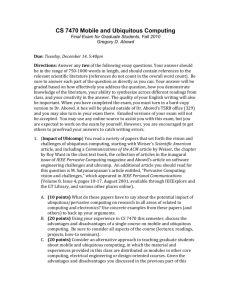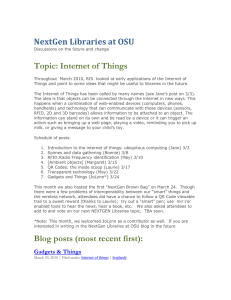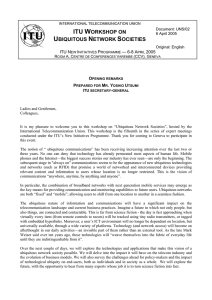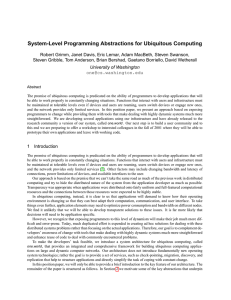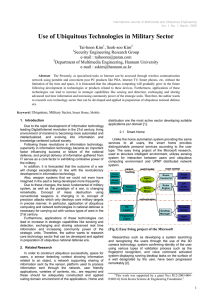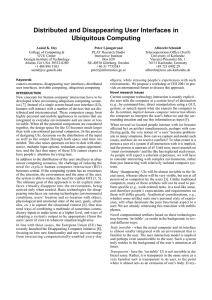Information Sharing in a Ubiquitous Computing Environment
advertisement
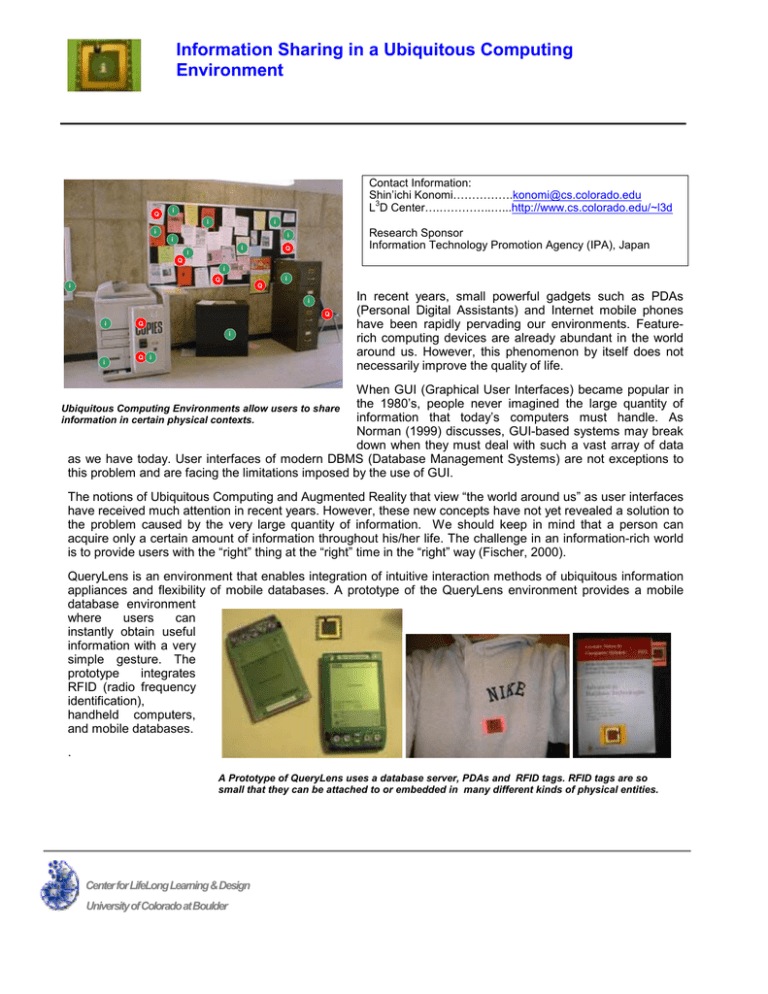
Information Sharing in a Ubiquitous Computing Environment Q Contact Information: Shin’ichi Konomi…………….konomi@cs.colorado.edu 3 L D Center….…………..…...http://www.cs.colorado.edu/~l3d i i i i Research Sponsor Information Technology Promotion Agency (IPA), Japan i i i i Q Q i i Q Q i i Q i Q i i Q i In recent years, small powerful gadgets such as PDAs (Personal Digital Assistants) and Internet mobile phones have been rapidly pervading our environments. Featurerich computing devices are already abundant in the world around us. However, this phenomenon by itself does not necessarily improve the quality of life. When GUI (Graphical User Interfaces) became popular in the 1980’s, people never imagined the large quantity of Ubiquitous Computing Environments allow users to share information that today’s computers must handle. As information in certain physical contexts. Norman (1999) discusses, GUI-based systems may break down when they must deal with such a vast array of data as we have today. User interfaces of modern DBMS (Database Management Systems) are not exceptions to this problem and are facing the limitations imposed by the use of GUI. The notions of Ubiquitous Computing and Augmented Reality that view “the world around us” as user interfaces have received much attention in recent years. However, these new concepts have not yet revealed a solution to the problem caused by the very large quantity of information. We should keep in mind that a person can acquire only a certain amount of information throughout his/her life. The challenge in an information-rich world is to provide users with the “right” thing at the “right” time in the “right” way (Fischer, 2000). QueryLens is an environment that enables integration of intuitive interaction methods of ubiquitous information appliances and flexibility of mobile databases. A prototype of the QueryLens environment provides a mobile database environment where users can instantly obtain useful information with a very simple gesture. The prototype integrates RFID (radio frequency identification), handheld computers, and mobile databases. . A Prototype of QueryLens uses a database server, PDAs and RFID tags. RFID tags are so small that they can be attached to or embedded in many different kinds of physical entities. Center for LifeLong Learning & Design University of Colorado at Boulder




